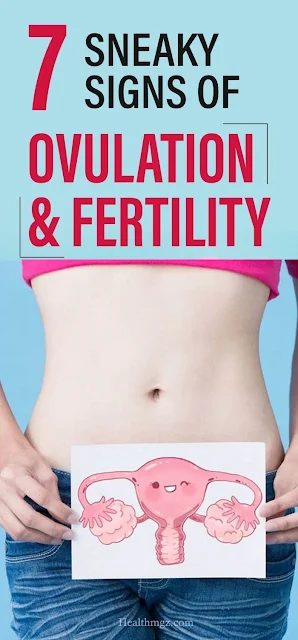Ovulation is a crucial process in a woman's reproductive system, as it is the time when an egg is released from the ovary and is available for fertilization. For women who are trying to conceive, understanding when ovulation occurs is essential to maximize the chances of becoming pregnant. While many women rely on tracking their menstrual cycle to determine their ovulation window, there are other sneaky signs of ovulation and fertility worth knowing.
Beyond feeling needy, there are several subtle changes that occur in a woman's body during ovulation, indicating peak fertility. These signs may not be immediately noticeable, but paying attention to them can help women better understand their bodies and improve their chances of conceiving. In this article, we will explore seven sneaky signs of ovulation and fertility, including changes in cervical mucus, increased sex drive, breast tenderness, abdominal cramping, changes in basal body temperature, positive ovulation tests, and a heightened sense of smell.
By knowing these signs, women can become more aware of their fertile window and take advantage of it to maximize their chances of conception. Tracking these changes over time can also help women understand their menstrual cycle and identify any irregularities that may indicate underlying health issues. So, if you're trying to conceive or just want to better understand your body's natural processes, keep reading to learn more about the sneaky signs of ovulation and fertility beyond feeling needy.
Here are seven sneaky signs of ovulation and fertility, beyond feeling needy.
Changes in cervical mucus: During ovulation, a woman’s cervical mucus changes in consistency and color. It becomes thinner, clearer, and more slippery, resembling the consistency of raw egg whites. This change in cervical mucus makes it easier for sperm to swim through the cervix and reach the egg.
Increased sex drive: Women may notice an increase in their sex drive during ovulation. This is because the body is biologically programmed to increase sexual desire during the fertile window to increase the chances of conception.
Breast tenderness: Breast tenderness can be a sneaky sign of ovulation and fertility. Women may experience breast tenderness or soreness as a result of hormonal changes that occur during ovulation.
Abdominal cramping: Ovulation can cause mild cramping or pain on one side of the abdomen. This pain, known as mittelschmerz, is a result of the egg being released from the ovary and can be a sign of peak fertility.
Changes in basal body temperature: Basal body temperature (BBT) refers to the body’s temperature at rest. During ovulation, a woman’s BBT rises slightly, and remains elevated until the next period. Charting BBT over time can help women predict their ovulation window and fertility.
Positive ovulation test: Ovulation tests measure the level of luteinizing hormone (LH) in a woman’s urine. LH levels surge just before ovulation, and a positive ovulation test indicates that ovulation is likely to occur within the next 24-48 hours.
Increased sense of smell: During ovulation, some women may experience a heightened sense of smell. This is due to an increase in estrogen levels, which can enhance the sense of smell and taste.
In conclusion, knowing the sneaky signs of ovulation and fertility can help women to understand their bodies better and improve their chances of conceiving. By paying attention to changes in cervical mucus, sex drive, breast tenderness, abdominal cramping, basal body temperature, ovulation tests, and sense of smell, women can identify their fertile window and plan their efforts to conceive accordingly.

